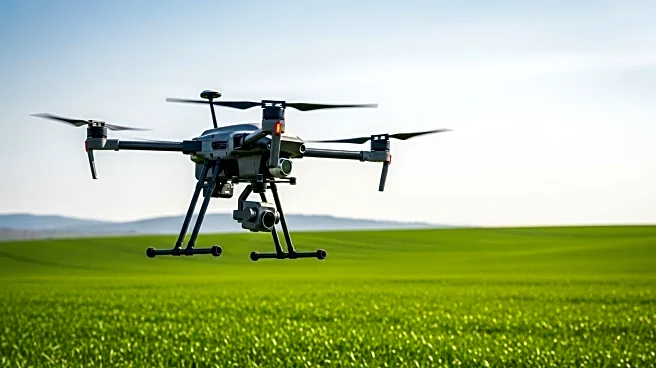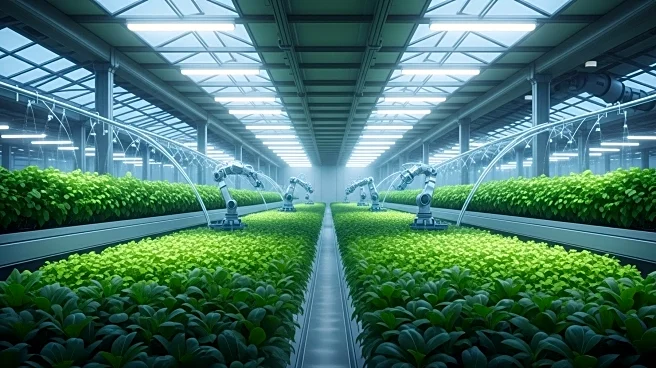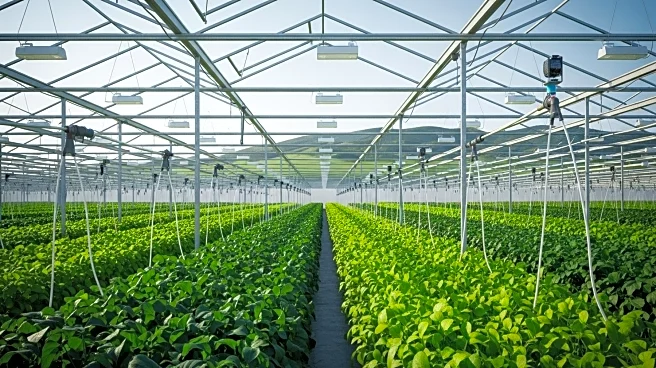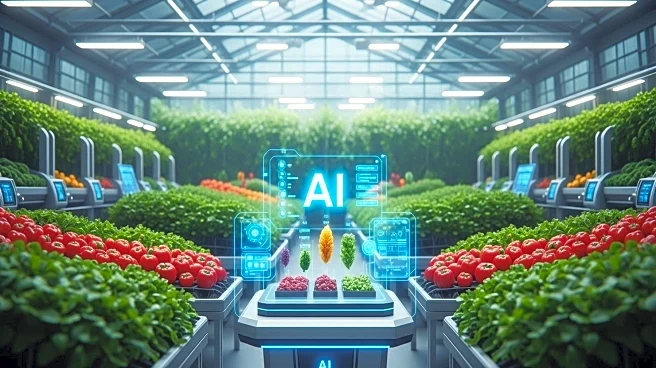What's Happening?
The integration of AI and robotics in agriculture is transforming traditional farming practices, as demonstrated at the Chinese Farmers' Harvest Festival. A robot dog equipped with a multispectral camera and intelligent recognition algorithms showcased its ability to scan crops, upload data, and generate detailed reports on farmland. This technology is part of a broader trend where AI and robotics are being used to automate tasks such as fruit picking and crop spraying, enhancing productivity and reducing resource use. Despite challenges faced by robotic harvesting companies, innovations like FineField's solar-powered robotic blueberry picker and adaptive selective tilling (AST) are gaining traction. AST, for instance, uses 3D terrain mapping and real-time sensors to optimize soil treatment, potentially reducing greenhouse gas emissions and pesticide use.
Why It's Important?
The adoption of AI and robotics in agriculture is crucial in addressing the challenges posed by climate change, such as longer dry seasons and water scarcity. These technologies offer solutions to improve yield, soil health, and water quality while reducing reliance on herbicides. The precision irrigation systems trialed in Washington state, which used significantly less water and increased yields, exemplify the potential benefits. For farmers, these advancements not only promise sustainability but also economic viability by lowering labor costs and improving efficiency. As labor costs can account for a significant portion of expenses, automation and precision tools are essential for maintaining competitiveness in the agricultural sector.
What's Next?
The continued development and adoption of AI and robotics in agriculture are expected to expand, with more farmers likely to invest in these technologies to enhance productivity and sustainability. Stakeholders, including agtech companies and research institutions, will likely focus on refining these technologies to address specific agricultural challenges. As these innovations prove their value, they may become integral to farming practices, potentially influencing policy decisions related to agricultural sustainability and climate resilience.
Beyond the Headlines
The shift towards AI and robotics in agriculture raises ethical and cultural considerations, particularly regarding the displacement of traditional farming methods and labor. While these technologies offer efficiency and sustainability, they also challenge the cultural heritage of farming communities. Balancing technological advancement with the preservation of traditional practices will be a key consideration for stakeholders. Additionally, the reliance on technology necessitates addressing data privacy and security concerns, as well as ensuring equitable access to these innovations for small-scale farmers.













